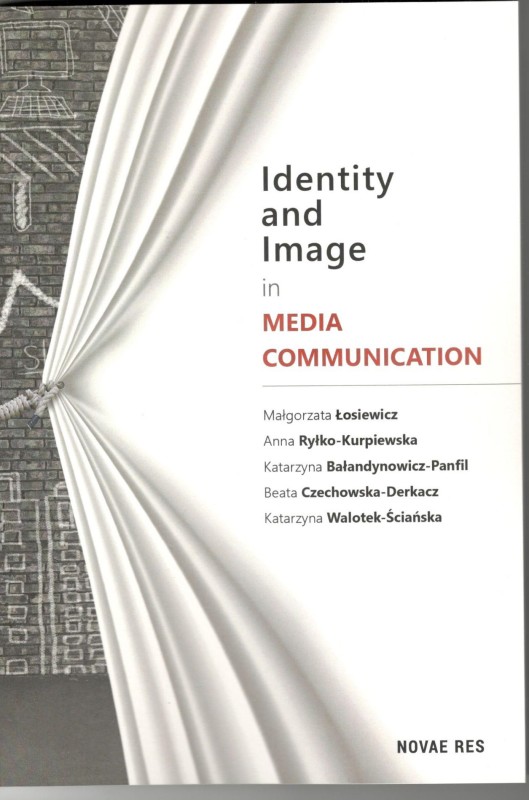Tytuł: Identity and Image in media communication
ISBN 978-0-9927953-3-7 (IRL); 978-83-8083431-6 (POL)
Katarzyna Walotek-Ściańska
Introduction
The issues related to the specificity of the creation of media images
(of organisations and people) are ever more willingly discussed in
various contexts, both in the public discourse and in academic papers.
The evident diversity of the approaches towards the notion and the
features attributed to it triggers public reflection and dialogue among
media studies scholars. This includes criteria defining image, the
fields in which it appears and the dynamic changes that it undergoes.
The book Identity and Image in Media Communication, now being
put by us into the hands of readers, is of interdisciplinary nature and
presents five various research approaches to the creation of image
as a phenomenon closely related to the identity of an organisation.
The book reflects various views on image, as encountered in the academic
and professional literature on public relations, advertising,
business, social and political marketing. Given the broad scope of
the phenomenon and its evolutionary character, as well as the need
to do further research, the publication does not assume a complementary
approach to the discussed matters. Rather, it is designed to
be an invitation to a discussion on the changing ways of perceiving
the image of people and organisations in the media. Hence, instead
of a traditional table of contents, the work is divided into “scenes”,
presenting different aspects of the same phenomenon. Such an approach
is well justified by the meaning and etymology of the word
“scene”, which in theatrical terminology (and in the current language
as well) refers to incidents happening at the same place yet requiring
a change of the setting. The notion of a scene, better than that of an
act (as part of the performance), reflects the specificity of the texts
contained in the publication. While not making up an integral whole,
8
the texts, nevertheless, reveal the existing potential for changing the
perspective when it comes to studying the image and identity of organisations
in media messages.
The publication adopted the assumption that when analysing
image, the specific features of the portrayed object (be it an organisation
or a group of persons) have to be taken into account, equally
with the intentions and objectives of the communication, the shape
of the message itself (including its characteristic features regarding
visual identification, the mode of content creation and the way in
which persons are presented), as well as the traits of the audience1.
For that very reason the book includes the perspective of the organisation,
the public tasks met by it and the pursued business objectives
(The role of the spokesperson as a professional communicator), the firm
and product (Can trademark genericisation prove advantageous to the
brand? A few remarks on the strategies pursued by Google), specific
features of communication-related activities concerning the medium
itself (Theatre image on the Internet and new forms of communication
with the audience), or the characteristics of the messages and the contemplated
audience group (Citizen journalists. A self-portrait from
a diachronic perspective and The importance of the media in shaping
the image of the elderly as consumers).
The multifaceted research approaches presented in the book are
intended to fuel a discussion on the changing forms and conditions
of image creation and its various faces. They are also supposed to
serve as an invitation to develop new scenes of the phenomenon by
academic circles.
1 Such a perception of image is typical of many papers dealing with this phenomenon.
Cf., inter alia, T.J. Dąbrowski, Rola mediów w kształtowaniu wizerunku,
“Marketing i Rynek”, 2013, No.9, p.10.



